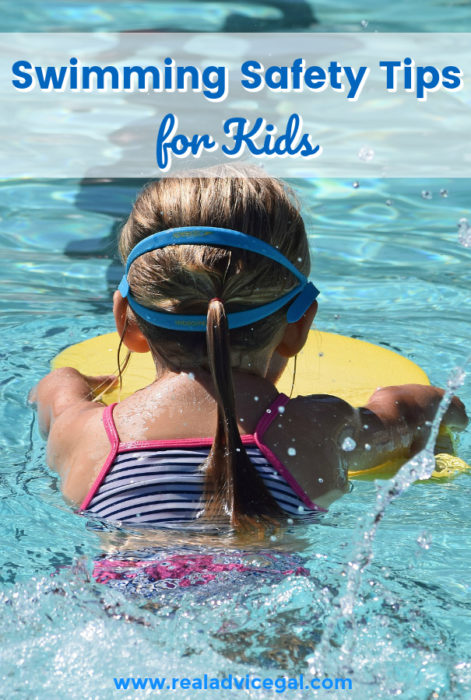What do you need to know to keep your kids safe while swimming
The sun is out and my little one is on the run. She is usually on the run straight towards water. I have thought about taking her to swim lessons but I am strapped for time. My husband also taught people how to swim when he was in the Navy; so he wants to do it. I keep seeing articles on children drowning and most times drowning occurs while the parent is right there. My husband actually rescued a three year old when she was in the pool with her babysitter. She was very lucky that my husband knew CPR or she wouldn’t be alive. It only takes a couple of seconds to go from fun to an emergency.
I asked my friend Angel if she had some tips to help me keep my little angel safe.

Ask A Swim Instructor: What do you need to know to keep your kids safe while swimming!
- Keep your eyes on your child at all times in and around water.
- Do not use floaties or rings to play with children in the water.This creates a false sense of security in an unskilled child.
- Utilize pool fences, alarms, etc. for barrier safety.
- ** Find an instructor in your area at Infant Swim to teach your child life-saving self-rescue skills by an ISR instructor. In case they fall in alone. “The sooner…the safer.”
Angel is an instructor for Infant Swim. Her website can be viewed here. I watched Angel on the news and I learned I need to teach my child how to float on her back. Then she should swim for the side. This little bit of information could be the difference in her surviving if she fell in the pool. I say fall but what I mean is run full speed and jump into the pool when we are not around or not paying attention to her.
In addition to keeping an eye on your kids around the pool, it is just as important to protect them while they’re in the pool.
Here are some tips to help keep your family and friends safe at the pool this summer:
- Did you know that more than 4.5 million people are treated for skin cancer every year? It’s important to start practicing proper sun protection at an early age – to protect skin now and prevent the damage from the sun’s UV rays that can build up over time.
- The Food and Drug Administration (FDA) recommends sunscreens with broad-spectrum UV protection and SPF 15 or higher.
- According to the American Association of Dermatologists, sunscreen that contains titanium dioxide or zinc oxide are safe to use on children six months and older.
- The American Association of Dermatologists also suggests applying sunscreen at least 15 minutes before going outside, and at least every two hours thereafter (more often if you’re in the water).
- Swimming in unsanitized water can expose you and your kids to a variety of illnesses like diarrhea, swimmer’s ear and skin inflections. Chlorine is added to the water to kill germs and is one of the first lines of defense against germs that can make swimmers sick.
- Both chlorinated pools AND salt-water pools require chlorine.
- Test your pool’s water every day to help keep it safe. Use an at-home kit to regularly test the levels of chlorine in your pool to determine if it is being properly sanitized. Read more here about how to use your at-home testing kit.
- A well-managed pool does not smell like chlorine and, if pool water irritates eyes, it may be a sign that there is not enough chlorine.
For more information about how these chemicals work to help keep our families safe, visit Chemical Safety Facts.

Cook, Baker, Phototaker, Fitness Mover and Shaker, Cupcake Tester, Deal Maker, Adventurous Undertaker, Do Good “Deeder”, Teacher, Mom, Wife, Patriot for Life & Giver of Good Advice – RealAdviceGal





